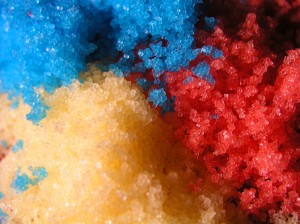How paint works, and why Glassprimer™ is different
There’s nothing mysterious about paint; paint has been around for a long time. “Cave paintings” are really paintings; they’re made from a mixture of materials that, when combined, form a crude kind of paint. And given that some cave paintings are 50,000 – 100,000 years old, the paint used by the earliest artists must have been pretty durable. What is paint? What does it contain, and what does ordinary paint tell us about Glassprimer™ glass paint?
Glassprimer™ glass paint is unique
Paint contains three basic elements: color, binder and solvents. The color is what we’re really after when we crack open a can of paint, but the binder and solvent play important roles in how well our paint projects turn out.
Paint colors typically come from a class of chemicals known as salts. As colorants, salts are pretty versatile. They can be transparent, opaque or metallic and control how we perceive light reflecting off of the crystalline structure of the salt. Salts can be combined to create virtually any color.
Salts are solids, so even though they come in some pretty magnificent colors, there’s no good way to transfer the color from the salt to another object if the salt stays in its crystalline form. That’s where the binder comes in. Binder is like a kind of glue. It makes the colored crystals stick to each other, and to some other surface.
If you just mixed the colored salts with the binder, you’d have a mess. The binder’s job is to make things stick together. If you’re trying to spread the binder over a surface, you’re going to be disappointed by the outcome because binders are sticky, not spready. Think about how unpleasant it is to spread white glue on something. The glue doesn’t coat your surface evenly. It pools in some places and is too thin in others. That is exactly what you’d get if you just put binder and color together. You would never get an even coat.
Enter solvents. Solvents dissolve things. The term “solvent” conjures up images of toxic chemicals that burn your skin and eyes, and irritate your lungs. Fortunately, not all solvents are so unkind! Water is a solvent because it can dissolve things. In fact, water is used as a solvent in some paints.
Mix a solvent into the color and binder, and now you have paint! (Incidentally, the same “recipe” works for ink.) The solvent makes the paint and binder easy to spread. It also helps create an even coating of the pigment and binder. When exposed to air, the solvents evaporate, and when they’re gone, they leave behind an even coat (hopefully) of color and binder. The binder cures, and the color is firmly stuck in place.
If you’re trying to paint on glass, an ordinary binder won’t work because it can’t get a good grip on the glass. You can paint on glass, and the paint will dry on the glass, just as it would dry on any other surface. It just won’t stick. The binder can’t interact with the surface of the glass, like it can interact with drywall, wood, masonry and other porous surfaces.
Glassprimer™ glass paint uses nano-scale technology to bond the pigment with the surface of the glass. In the case of Glassprimer™ glass paint, the paint actually modifies the molecular surface of the glass, which allows the paint to bond permanently with the glass. The paint does not simply dry on the glass; it actually becomes part of the glass. This ability to become part of the glass surface is what differentiates glass paint from ordinary paints.
If you’d like more information about working with glass paint, please check out the rest of our site. If you’d like to purchase Glassprimer™ glass paint, please visit our online store .
Photo Credit: Darek, via FreeImages.com

